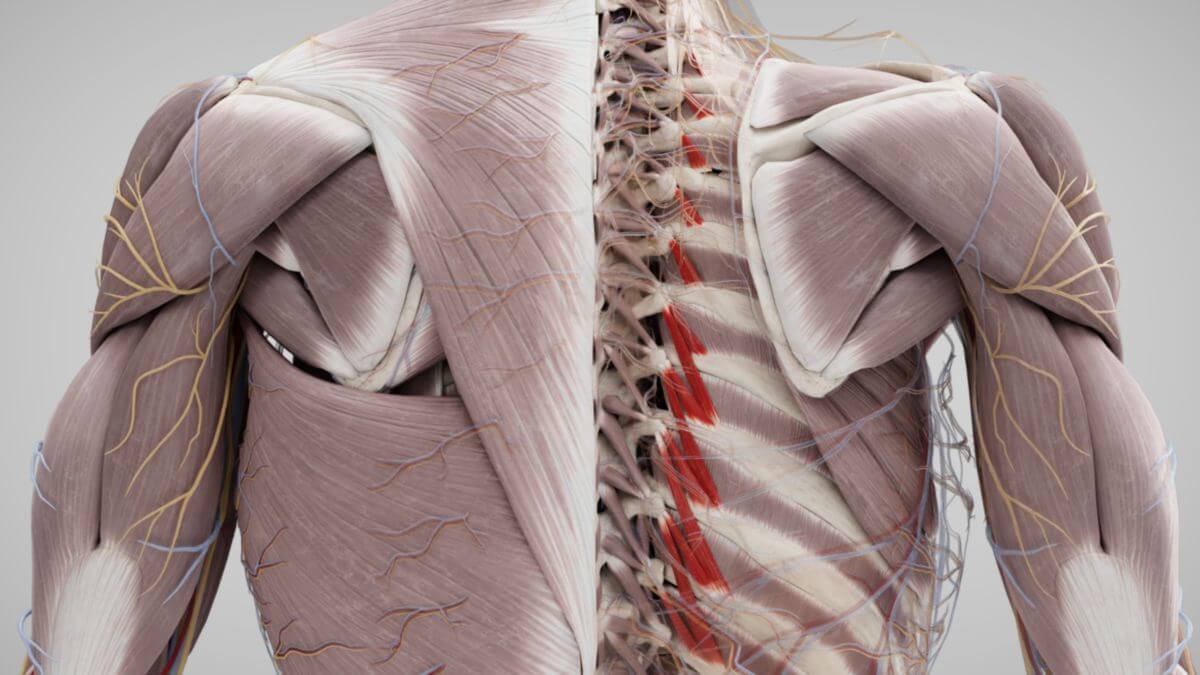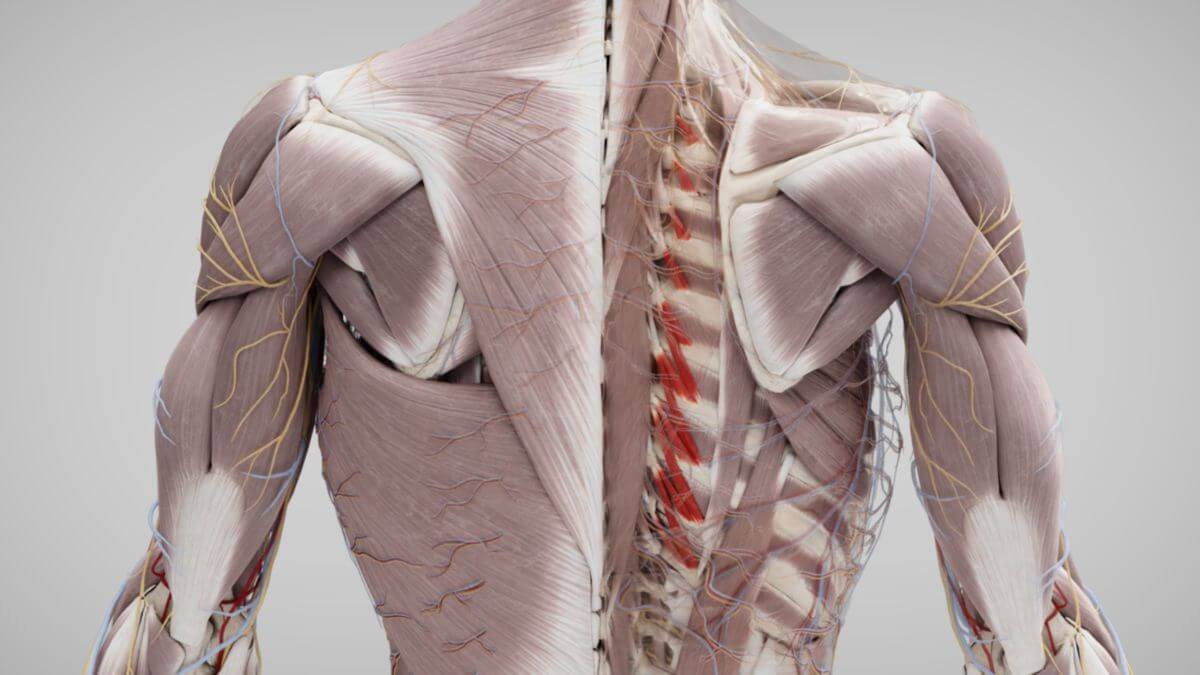Corpus: Levatores costarum muscles
1. Definition
The levatores costarum muscles are a group of 12 paired back muscles that do not fit neatly into a specific muscle group. They are typically classified as autochthonous back muscles because they are primarily innervated by the posterior branches of the spinal nerves, with additional fine branches from the intercostal nerves. These muscles appear to have migrated from the transverse processes to the ribs, leading some sources to classify them as secondary migrated back muscles.
2. Classification
The levatores costarum muscles are divided into two groups based on their course:
- Levatores breves costarum muscles
- Levatores longi costarum muscles
3. Course
3.1. Origin
The costal levator muscles originate from the transverse processes of the 7th cervical vertebra (C7) to the 11th thoracic vertebra (T11). From these points, they extend obliquely downward and laterally.
3.2. Insertion
The levatores breves costarum muscles attach to the rib immediately below their point of origin, while the levatores longi costarum muscles attach to the second rib below their point of origin.
4. Innervation
The costal levator muscles are innervated by the posterior branches of the spinal nerves.
5. Function
The primary functions of the costal levator muscles are to assist in the extension (dorsiflexion) and lateral tilt of the spinal column. They also contribute to a slight rotational movement in the lower thoracic spine. Despite their name, these muscles do not actually lift the ribs.




